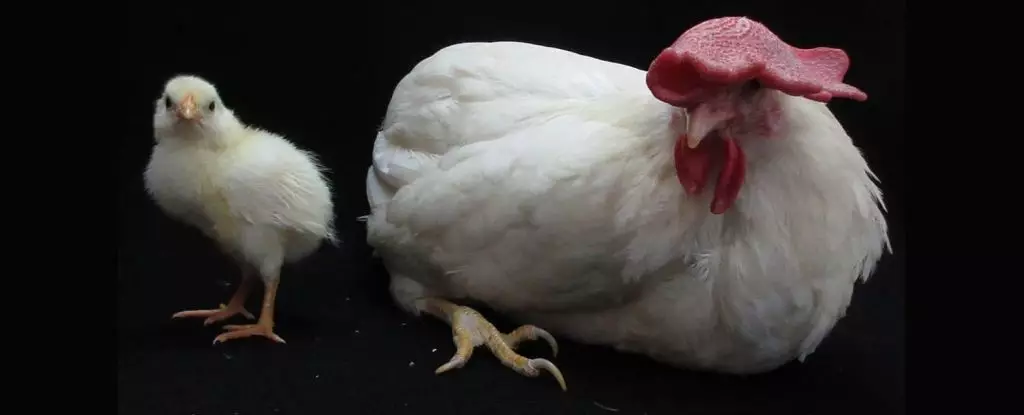The avian world showcases a remarkable array of species that have inherited characteristics from their ancient dinosaur ancestors. These feathered creatures inhabit every corner of the Earth, each adapting uniquely to their environment. One intriguing aspect of their biology lies in their reproductive process, particularly the incubation of their young within eggs. For years, scientists have sought to peer inside these eggs without cracking them open, aiming to understand the complex process of embryonic development. Recent advancements, however, have brought to light a revolutionary approach—a shell-less culture system that provides unprecedented insights into the initial stages of bird life.
Historically, observing avian embryos during their development has been hampered by the opaque nature of eggshells, which conceal crucial information about their growth. Conventional observation methods usually involve physical alterations, like cracking an egg or sacrificing the embryo. While the embryo’s initial days within the egg are critical to its survival, these invasive techniques often yield incomplete data and disturb the delicate balance of embryonic development.
In a significant leap forward, researchers have engineered a shell-less culture system (SLCS) for the domestic white leghorn chicken (Gallus domesticus). This innovative system allows for continuous monitoring throughout the entirety of the embryo’s development. The team, led by veterinary scientist Katsuya Obara and his colleagues, navigated the challenges posed by earlier methods, which struggled to maintain normal embryo viability outside of the eggshell.
A barrier faced by previous SLCS approaches was the drying of the vitelline membrane surrounding the embryo, which is essential for nutrient transfer. Recognizing this critical issue, Obara and his team ingeniously employed a rotary shaker to create a continuous flow of nutrient-rich albumen, mimicking the protective environment of a natural egg. By experimenting with varying rotation speeds, they observed that a moderate setting of 10 rotations per minute yielded the best results in balancing survival rates and developmental normalcy.
Despite this achievement, challenges remained. The researchers documented varying outcomes as they adjusted the speed; at higher speeds, embryos presented significant survival challenges, underlining the precision needed in simulating the egg’s natural environment. The methodical examination of these variables reflects the meticulous nature required in understanding and preserving embryonic life.
Oxygenation became another focal point in the team’s research. They discovered that introducing oxygen at various stages of growth was beneficial, although the timing of this addition proved less critical than previously believed. This finding has significant implications for the future of embryonic research as it reveals that the nurturing environment can be adjusted without adversely affecting development, thereby enhancing the success of the SLCS.
The team further refined their approach by incorporating manual movement of the culture vessels, a practice that resulted in improved hatch rates. When combined with the optimal rotation speed and oxygen supply, the hatch rate surged to an impressive 10.5%. This combination of techniques not only yielded viable chicks but also opened new avenues for research applications focusing on avian developmental biology.
The research conducted by Obara and his team extends beyond chicken embryos; it signifies a monumental step in avian studies and embryological research as a whole. By allowing for real-time monitoring of phenotypic outcomes through a transparent membrane, this innovative SLCS model can be applied in studying various avian species and even broadened to other egg-laying organisms.
The prospect of yielding fully developed, normal embryos using this method proffers a unique opportunity for genetic and environmental studies in the avian population. Investigating how different variables influence development could enhance our understanding of evolutionary biology, ecology, and even conservation efforts for endangered bird species. Furthermore, the knowledge gleaned from this shell-less culture system could be adapted for other areas in biotechnology and medicine, paving the way for more sophisticated techniques in developmental studies.
This breakthrough in shell-less avian culture technology offers a transparent view into the mysterious world of embryo development, blurring the lines between theory and observation. As researchers continue to fine-tune and implement this method, the possibilities for expanding our understanding of embryonic development are limitless. The ability to monitor and manipulate growth not only enhances scientific knowledge but also presents ethical and practical advantages for the breeding and conservation of avian species around the globe. This innovative system marks an important new chapter in the understanding of life itself, echoing whispers from the distant past into the present.


Leave a Reply